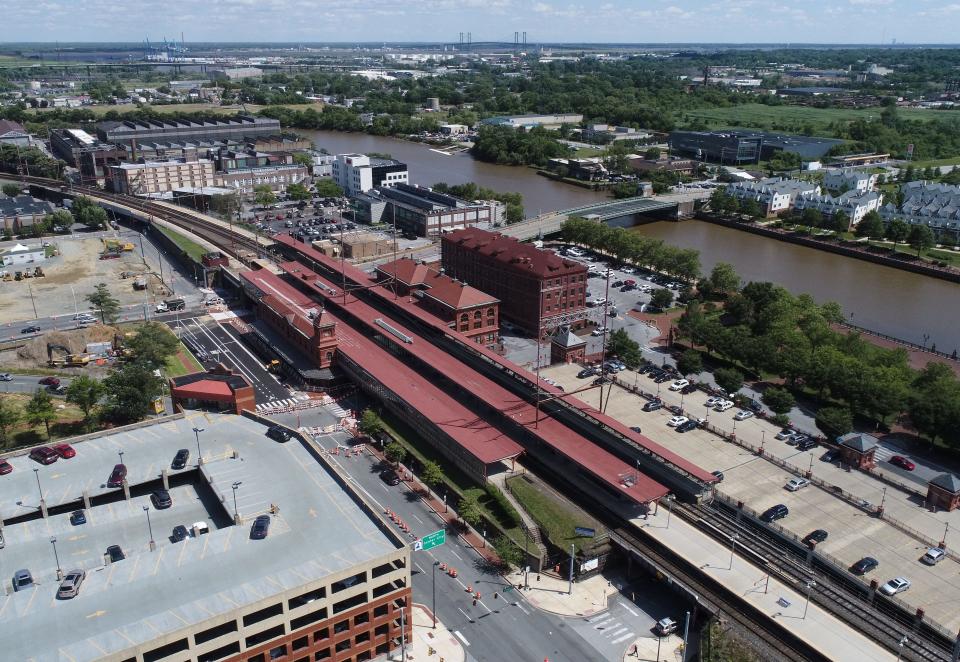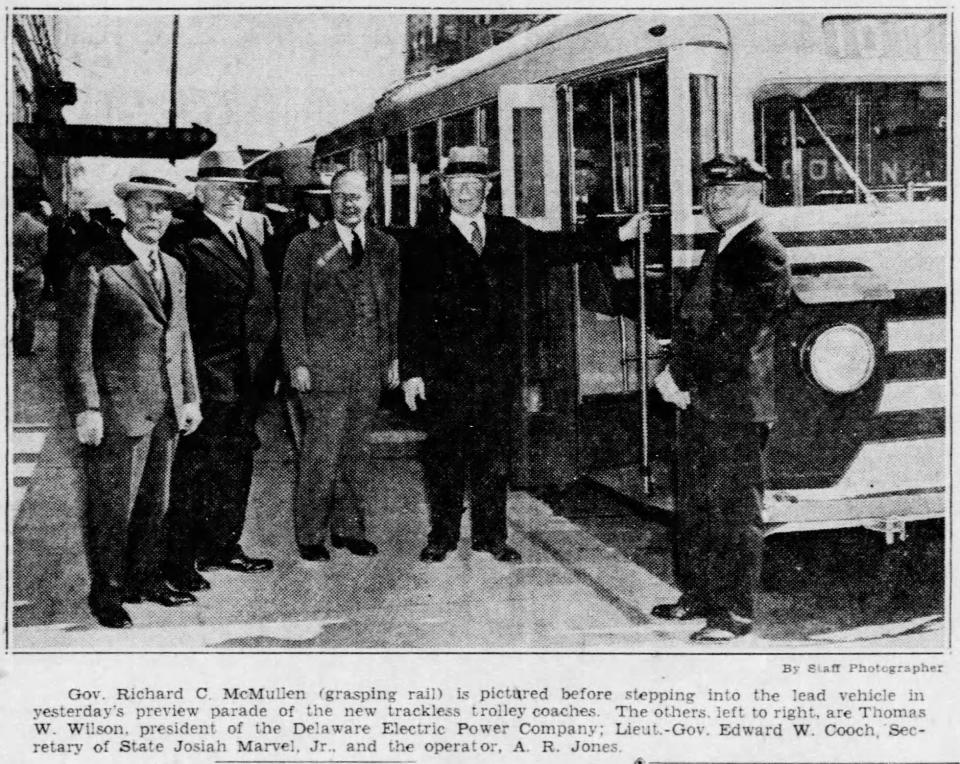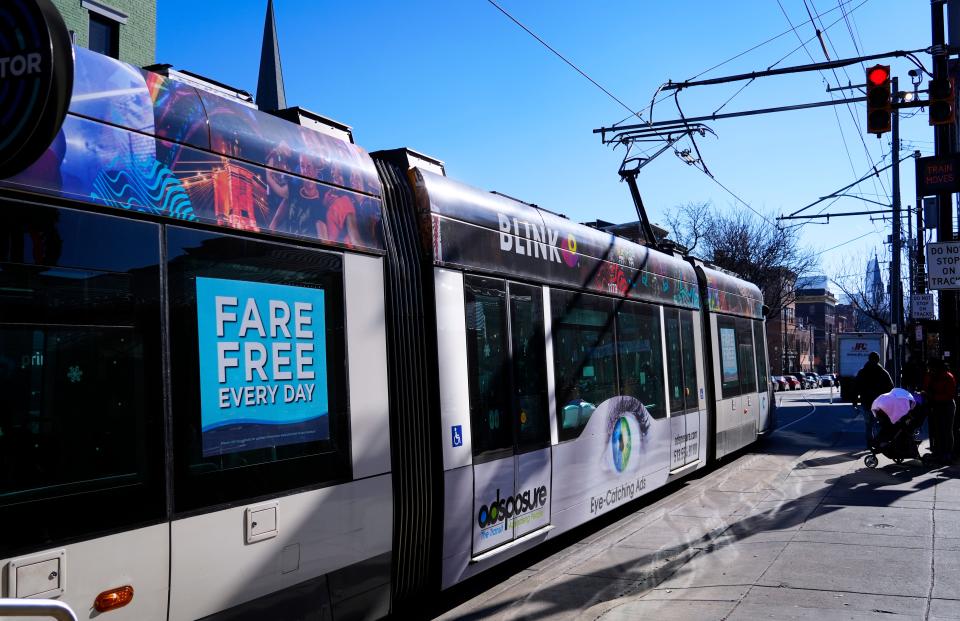How a Wilmington trolley could improve transit access, spark economic development
Editor's Note: This story has been updated to include comment from the city of Wilmington and to clarify the partnership AmeriStarRail is proposing with Amtrak.
Could a downtown trolley connection in Wilmington help improve accessibility while sparking economic development in Delaware’s largest city?
Those proposing the Wilmington Trolley CityLink say it would be a “remarkable engine.”
“This would be a phenomenal way to make Wilmington more successful in the future and to futureproof the city in economic downturns,” said Scott Spencer, chief operating officer of AmeriStarRail. “I’ve done these systems and I’ve seen how powerful they are in terms of being an economic catalyst for the success of a city.”
The electric streetcar proposal by AmeriStarRail would offer a continuous loop through the Wilmington Riverfront, up Market Street’s downtown corridor, and through the Brandywine Zoo via existing railroad rights-of-way, expanding existing public transit access and connections provided by DART buses.
But the proposal’s lack of firm financial figures and details on operation and maintenance have given stakeholders in Delaware pause.
The Delaware Department of Transportation confirmed that Delaware Transit Corp. CEO John Sisson met with Spencer to discuss the project, but “many key questions” were left unanswered.
Spencer “didn’t have answers to many key questions like how much it would cost to build (tracks, train cars, maintenance facility, etc). It was also suggested the trolley would be free and that business would pay to cover the lost fares, but they haven’t determined how much it would cost to operate and maintain,” said C.R. McLeod, a Transportation Department spokesman. “DART currently has bus services that travel most of the route they are proposing and due to the questions above we have not committed support for the project at this stage.”
Wilmington officials said they would need “more information about this proposal before we can comment on its merits.”
Why trolleys in Wilmington?
AmeriStarRail, a Wilmington-based company, is proposing a partnership with Amtrak to help expand access and increase ridership for the national transit system.

Spencer said the company is working with Pennsylvania and Maryland officials on a bi-level bridge to help alleviate a bottleneck across the Susquehanna River between commuter and freight train traffic from Wilmington to Maryland. This project would also allow for Amtrak to increase commuter rail speeds to 200 mph and provide a trailway link for bicyclists and hikers, according to AmeriStarRail’s proposal synopsis.
A Wilmington trolley system would provide greater access to the train station, which services both Amtrak and local SEPTA passenger rail, thereby increasing Amtrak ridership, Spencer said.
“Our motivation is to reach more Amtrak passengers and to promote Amtrak on these street cars because we have a partner in Amtrak to do that,” he said. “But we are going to leave it to DelDOT to work out financing and operation of the streetcar.”
Trolley history in Wilmington
Delaware’s largest city is also no stranger to streetcars.
Trolley Square got its name thanks to Wilmington City Railway Co. operating the city’s first horse-drawn street railway in the mid-1800s, according to Hagley Museum and Library.
And by 1888, the Wilmington Street Railway began operating its first electric car from Market and 10th streets to the Riverview Cemetery. Other companies followed suit, and horse-drawn streetcars ended operations by 1892.

“By the early 1920s, electric streetcar companies faced increasing competition from automobiles,” the Hagley Museum and Library wrote. “Buses and trackless trolleys proved more efficient and the Wilmington & Philadelphia Traction Co., which changed its name to the Delaware Electric Power Co. in 1927, began to fade out its trolley systems in favor of gas buses.”
Electric streetcars were discontinued by 1940. Any remaining rails were removed from city streets shortly thereafter.
Unknown costs, but promised return on investment
With the project proposal in its infancy stages, Spencer said it’s unknown what the costs to build out the electric trolley system would be. It’s contingent on the design and engineering, he said.
“But, I am confident that it will at least double the cost of the project with jobs and economic activity associated along the route,” he said. “It will pay for itself in those indirect ways.”
Spencer, who worked on the extension of the Hudson-Bergen LRT in northern New Jersey in 2000, said communities surrounding the newly installed rail saw an increase in economic development and increased ridership.
He said that project cost $1 billion, but New Jersey communities quickly saw a return on the investment, with the system sparking $5 billion in residential, commercial and hotel development within the first few years of opening.
No fares, no wires
The Wilmington trolley system would be free for riders, Spencer said.
This would be done through corporate sponsorships and state subsidies, he said. Spencer proposed wrapping the streetcars in advertisements, which would help alleviate the need to charge a fare.

The system would also be free of overhead wires often common in older electric streetcar operations, he said. Instead, the electric trolleys would have a charging area at the Riverfront where overhead wires would charge the streetcar.
Rails for the trolleys would still need to be installed.
Got a tip? Contact Amanda Fries at afries@delawareonline.com. Follow her on X at @mandy_fries.
This article originally appeared on Delaware News Journal: Would a Wilmington trolley improve transit access, spark development?

